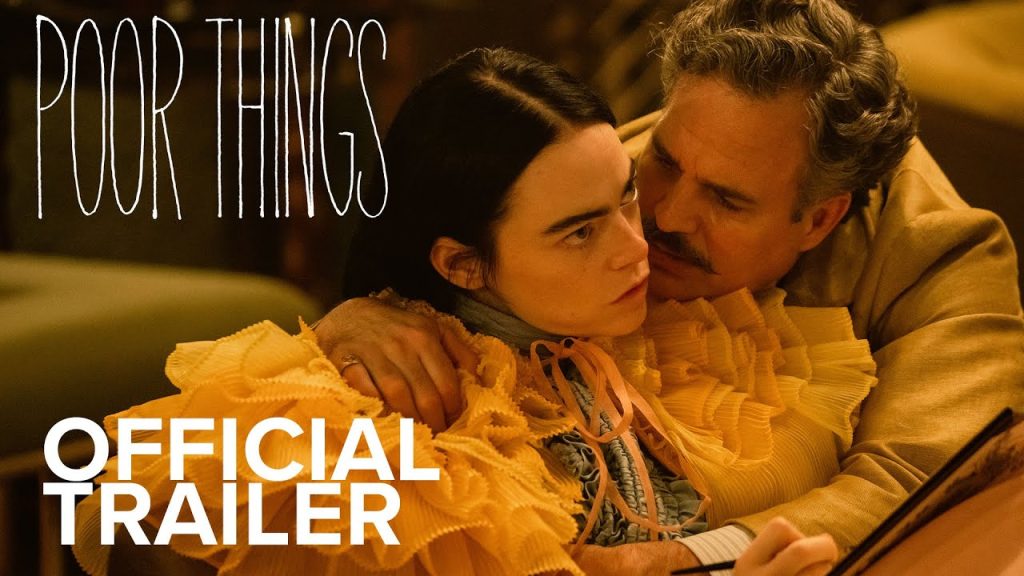
by Amil Imani
‘Poor Things’ in the limelight with 11 Oscar nominations
In 2011, Lanthimos traveled to Glasgow to meet Gray, intending to adapt his novel into a film. This meeting is intense, with Gray expressing his willingness to let Lanthimos adapt his novel. This initial meeting laid the groundwork for what would eventually become the film “Poor Things,” which Lanthimos directed with Emma Stone. Gray was probably impressed by Lanthimos’s work, particularly his film “Dogtooth,” and Lanthimos, in turn, aimed to pay homage to him through the character of Godwin Baxter, portrayed by Willem Dafoe in the film. This character was seen as an alter ego for Gray in the novel.
Thus, “Poor Things” turned out to be a fascinating collaboration between Yorgos Lanthimos, renowned for his unconventional filmmaking style, and Alasdair Gray, the author of the novel upon which the film is based. Lanthimos’s reputation for blending genres and exploring complex themes is evident in “Poor Things,” a film that seamlessly combines elements of comedy, romance, science fiction, and horror, creating a unique cinematic experience.
Bella Baxter is at the center of the narrative, portrayed with depth and nuance by the talented Emma Stone. Bella’s journey from naivety to self-discovery serves as the film’s emotional anchor, guiding viewers through a world of uncertainty and intrigue. Stone’s performance is nothing short of mesmerizing, capturing the complexities of Bella’s character with grace and authenticity. From moments of bewilderment to scenes of empowering liberation, Stone effortlessly embodies the essence of Bella, making her journey both relatable and compelling.
As Bella navigates the labyrinthine corridors of her own psyche, she encounters a cast of eccentric characters, each with their quirks and idiosyncrasies. One such character is Godwin Baxter, portrayed with gusto by the legendary Willem Dafoe. Godwin is a surrogate for Gray, a larger-than-life figure whose presence looms large over the narrative. Dafoe’s performance is electrifying, imbuing the character with a sense of gravitas and menace that is both captivating and unsettling.
In addition to its stellar cast, “Poor Things” also boasts a visual aesthetic that is as bold and audacious as its narrative. Departing from his usual minimalist approach, Lanthimos opts for opulence and grandeur, creating a visual spectacle that is both breathtaking and disorienting. From the lavish sets to the elaborate costumes, every aspect of the film’s production design is meticulously crafted to immerse viewers in the surreal world of Bella Baxter.
The film’s visual splendor is complemented by a hauntingly beautiful score by the renowned Jonny Greenwood. Greenwood’s evocative music enhances the film’s atmosphere, adding depth and emotion to the narrative. Together, Lanthimos and Greenwood create a sensory experience that is as immersive as it is unforgettable, transporting viewers to a world where reality and fantasy blur into one.
“Poor Things” transcends being merely a feast for the senses, a profound exploration of the human condition. The world of “Poor Things” is eerily similar to our own but with distinct and disturbing disruptions to the laws of reality. This uncanny visual maximalism mirrors Bella’s journey through an alien world, unobstructed by societal norms, as she navigates her newly reborn body. This metaphor for self-actualization resonates with the viewers, offering a broad parable for the universality of human experiences.
The film prompts audiences to reflect on their experiences of love, loss, and self-discovery, underscoring cinema’s ability to inspire, provoke, and challenge our understanding of the world. Ultimately, it emerges as a bold statement of cinematic innovation and narrative audacity, a triumph of modern filmmaking that blends genres and themes in an entertaining and thought-provoking manner.
With stellar performances, mesmerizing visuals, and an unapologetic embrace of the bizarre, “Poor Things” stands as a testament to the power of cinema to provoke, inspire, and transcend. Whether you’re a fan of Lanthimos’s previous work or simply seeking something wholly original, “Poor Things” is an experience not to be missed.
Prepare to be dazzled, disturbed, and ultimately enchanted by the strange and wondrous world of “Poor Things.”








2 Responses
Reads like a nightmare script of womanly re-definition towards progressive ends to me… but lovely in its workings, I suppose.
I may have to see it, as I am not wholly wiser as to its actual content.
But it does seem part of a broader trend in cinema in which both artistic films and YA films seem to seek an audience for whom liberation from not only society, but any society, and not only their own body, but physicality itself, or even the material, is paramount. A sort of new spirituality on the way to being the new religion.
It’s not every movie, most movies are crash-bangers that make 80s action films look like Shakespeare, or cheesy comedies. But a lot seem to involve time travelling lovers, reverse aging lovers, or beings that hop from human host to human host while learning and teaching us that we are all the same after all.
Or, to cite Yoda in what proves to be a more conservative narrative, “luminous beings are we, not this crude matter”. It seems the moral and emotional imperative of the times to make this true.